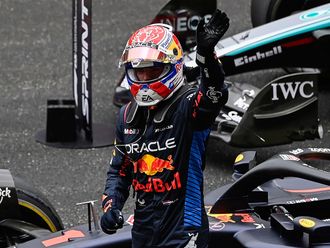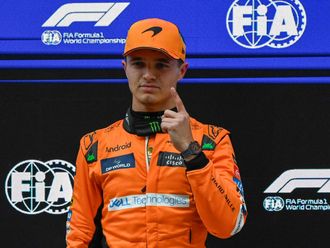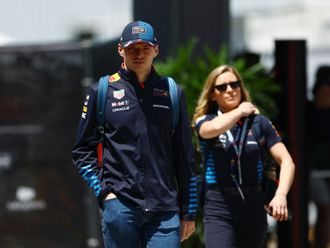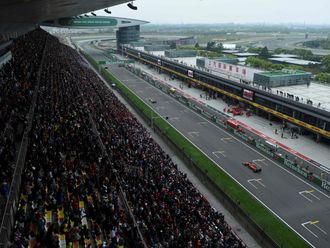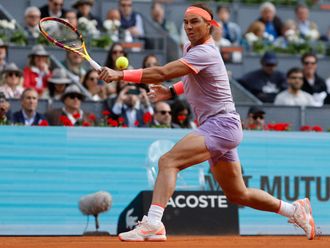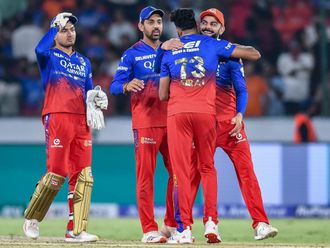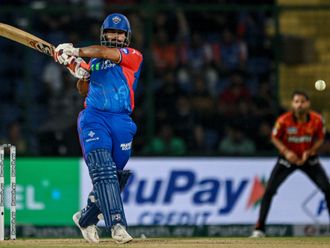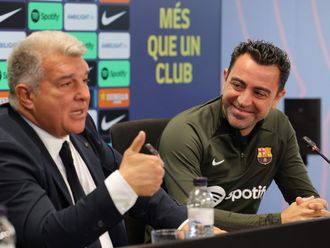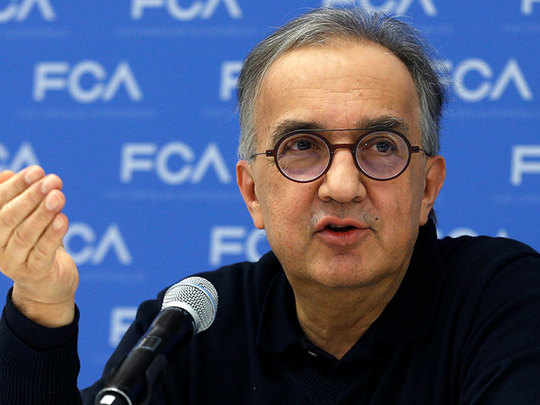
Budapest: Here at the Hungaroring, the untimely passing of Ferrari kingpin Sergio Marchionne is acutely felt.
The prancing horse flags are at half-mast on the Scuderia motorhome, staff are all wearing black armbands, while the cars of Sebastian Vettel and Kimi Raikkonen have both had black stripes added to the paintwork.
With even Maurizio Arrivabene, the inscrutable principal, removed from scheduled press duties on Friday, the impression was of a team stricken by a sense of numbness.
Marchionne, who died this week aged 66, after complications from shoulder surgery, was as feared as he was revered. In the wake of several Ferrari gaffes late last year, from Vettel’s first-corner crash in Singapore to the malfunction he suffered at Suzuka of a pounds 52 spark plug, the chief executive described the period as “embarrassing”.
When he arrived here in Hungary last year, Ferrari were wary of repeating their habit of underperforming in his presence.
As it turned out, they achieved only their second one-two finish since 2010. The loss of such a strong-armed leader, who repeatedly threatened to remove Ferrari from Formula One if they were not -guaranteed favourable treatment, leaves the sport’s most decorated team strangely rudderless.
Toto Wolff, who as Mercedes team principal dealt with Marchionne at many F1 strategy meetings, expressed the size of the void left behind. “I don’t want just to go back to business as usual, because we are Mercedes, Ferrari are our great friends, and we are badly shocked by events,” he said. “He was a friend, ally, rival and competitor, and he will be dearly missed.
“Sergio was a bigger personality than life, somebody who in negotiations with F1 and the FIA, had the most powerful voice. These shoes are impossible to fill. There was only one Sergio Marchionne.”
As a businessman, Marchionne pulled off some giddying feats. He turned Fiat, once a middling -European carmaker, into a global behemoth. In a stunning coup, Fiat took ownership of Chrysler in the throes of the global financial crisis in 2009, with Marchionne committing no cash, but pledging to -reopen factories that had shut down during the US company’s bankruptcy.
In his trademark dark sweater, he cut an unassuming figure in the flesh, but he could be an uncompromising ruler, famously savaging Raikkonen as a “laggard” after the Finn’s string of indifferent results.
Marchionne was also distinguished by the fact that he lacked the noble lineage of his Ferrari forebears. Luca di Montezemolo, his immaculately-groomed predecessor, hailed from Piedmontese aristocracy, but Marchionne was proud of his own background as the son of an Italian emigre to Canada.
In the F1 realm, the task of replacing him is a complex one. He had helped rejuvenate Ferrari, from the fallow years that followed Michael Schumacher’s five consecutive world titles, and the momentum urgently needs to be sustained.
With Marchionne’s health deteriorating, Ferrari moved swiftly, appointing John Elkann, the grandson of former Fiat chief Gianni Agnelli, as chairman, and Louis Carey Camilleri, previously the leader of tobacco giant Philip Morris, as chief executive. Neither are likely to be soft touches in the talks to reshape F1’s future beyond 2021, but whether the two men can match Marchionne’s skill for protecting Ferrari’s interests is a moot point.
One important subplot involves Raikkonen. Camilleri is friends with the 2007 world champion, who turns 39 in October and whose contract expires at the end of the year. But he could yet be persuaded to stay on for another season.
The one certainty is that Ferrari are determined, even at a time of tragedy, to advance Marchionne’s vision.


